After several challenging years of distance and completely virtual meetings, the Foundry was excited to welcome our user community back to Berkeley Lab for the 2022 Annual User Meeting.
The morning kicked off with a welcome from the User Executive Committee Chair, Cheryl Tajon and from Energy Sciences Area Associate Lab Director, Jeff Neaton. Foundry Director Kristin Persson provided a Foundry update – detailing the overall state of the facility, as well as highlighting recent changes to Foundry staff. Some new capabilities of note include new instrumentation in the Biological facility for biomolecular functional characterization, the QSPLEEM in the Imaging facility for probing material surfaces at 5K with 6nm resolution, and a new partnership with the Liquid Sunlight Alliance (LiSA) which will provide our users access with additional instrumentation at Berkeley Lab.
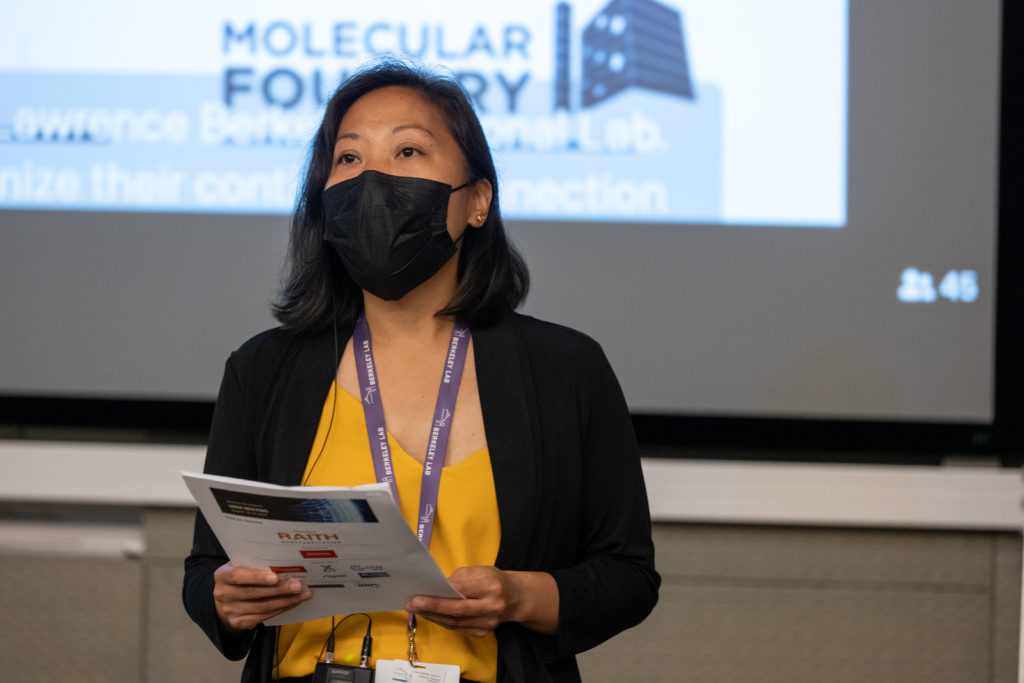

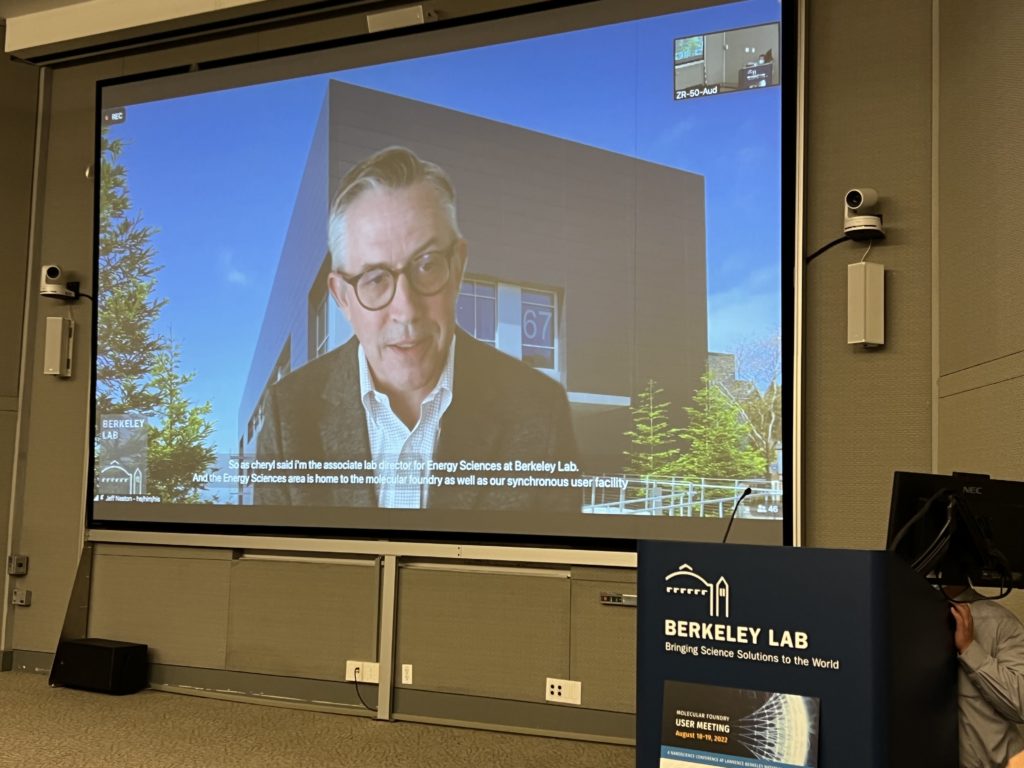
The keynote speaker, Celia Merzbacher, Executive Director of the Quantum Economic Development Consortium (QED-C) gave a rousing talk on the growth of everything quantum. Her key takeaways were that the quantum field is growing and advanced materials and fabrication will be key to that growth. Additionally, workforce gaps exist in all sectors that are related to quantum, and many jobs don’t require quantum expertise or a PhD. Her organization, QED-C, is about to embark on an exercise to develop a roadmap for quantum technologies similar to how Moore’s law has defined the growth of the semiconductor industry thus far. They hope to identify bottlenecks, inform the supply chain, and find paths forward to close what gaps exist. They invite potential collaborators to reach out to participate.
In the next segment, AUM participants heard from Foundry users, starting with Jim Schuck from Columbia University. He described the history of UpConverting NanoParticles at the Foundry, with significant contributions from the Foundry’s Emory Chan and Bruce Cohen.


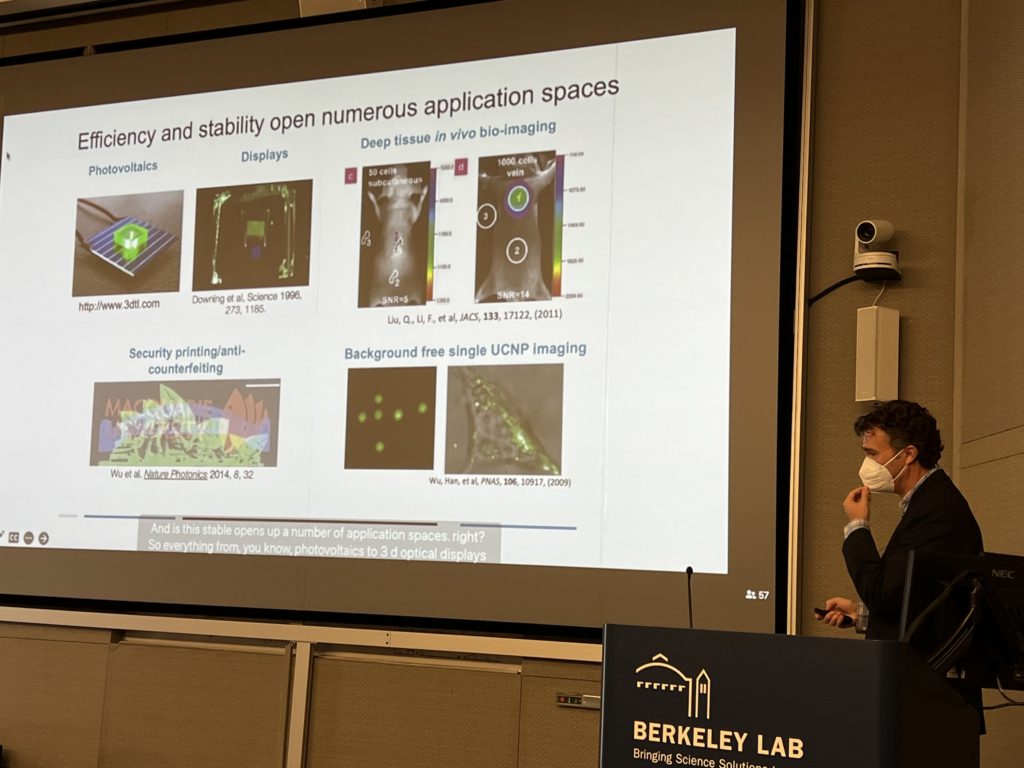
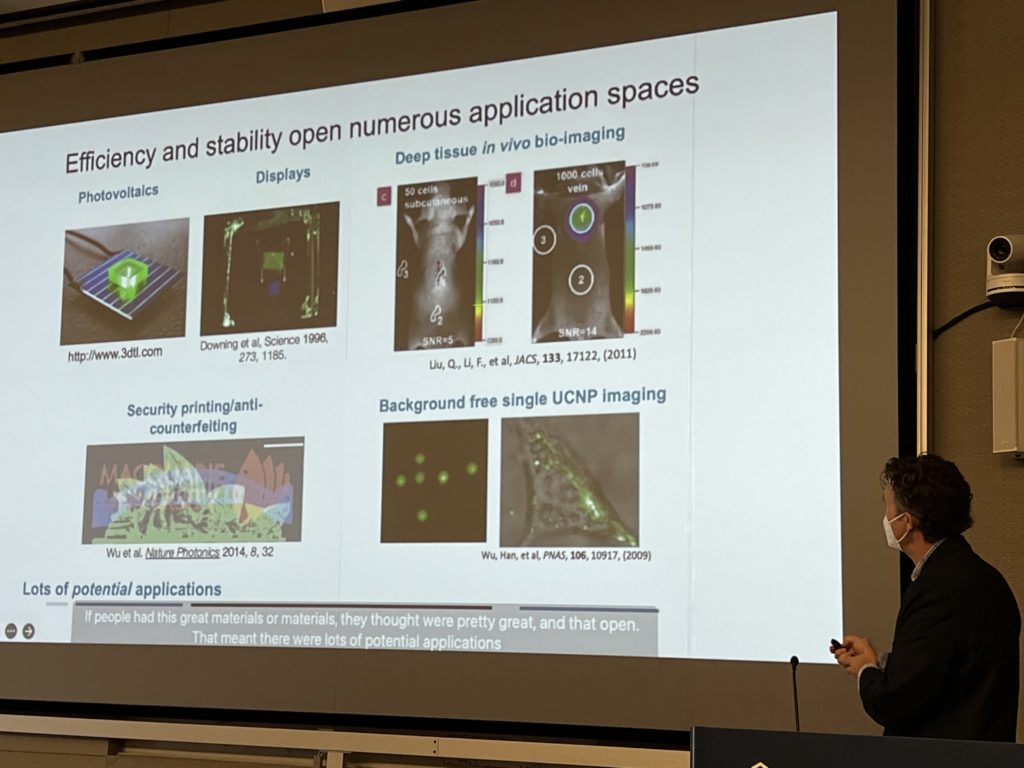
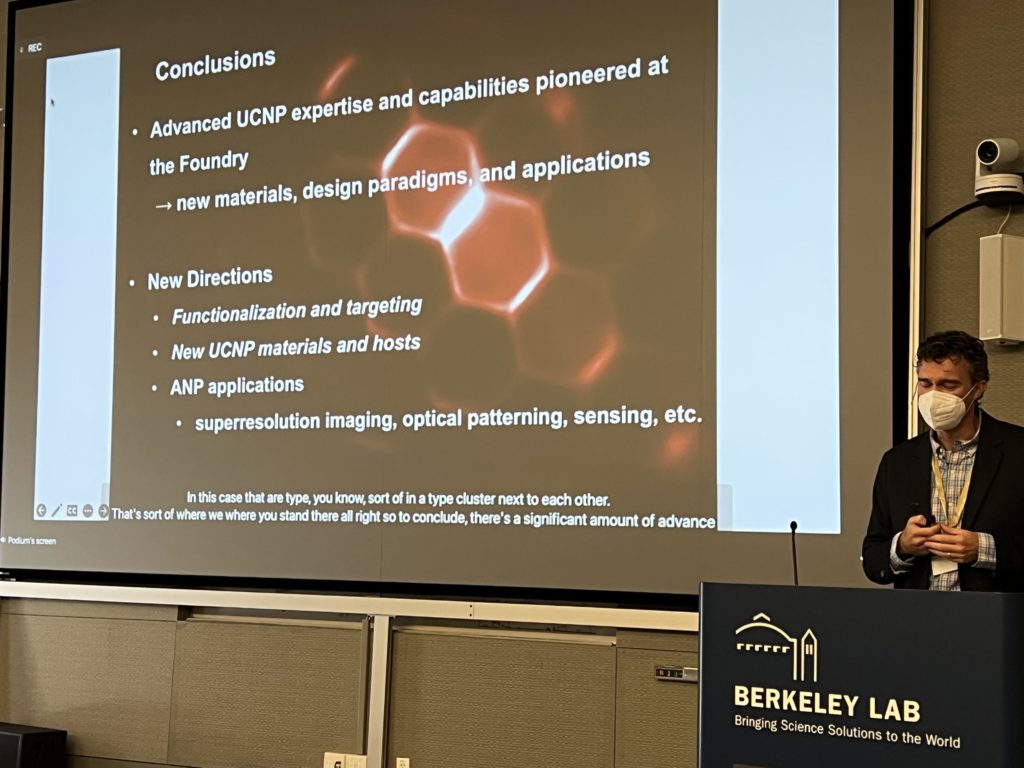
We also heard from this year’s winner of the Student Paper Award. Samra Husremovic, from the Bediako Lab at UC Berkeley, presented her work on 2D magnetic materials and her discoveries that chemical intercalation gives rise to intercalated structures with magnetic properties. These properties persist even at the thinnest limit of the 2D structures.
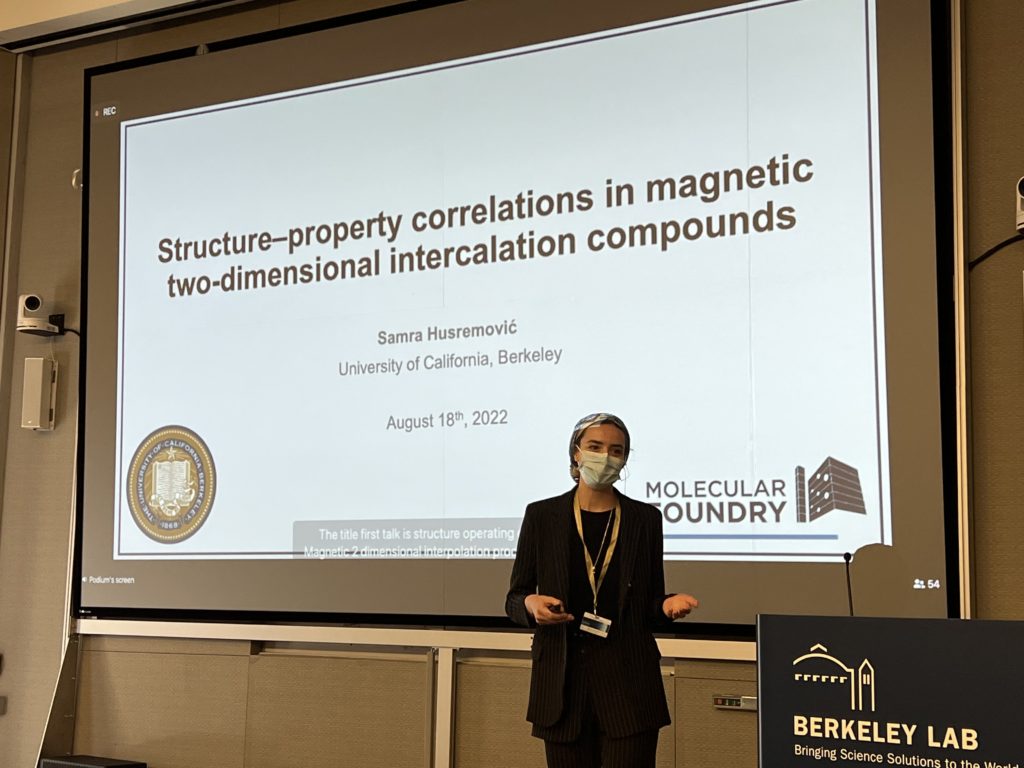

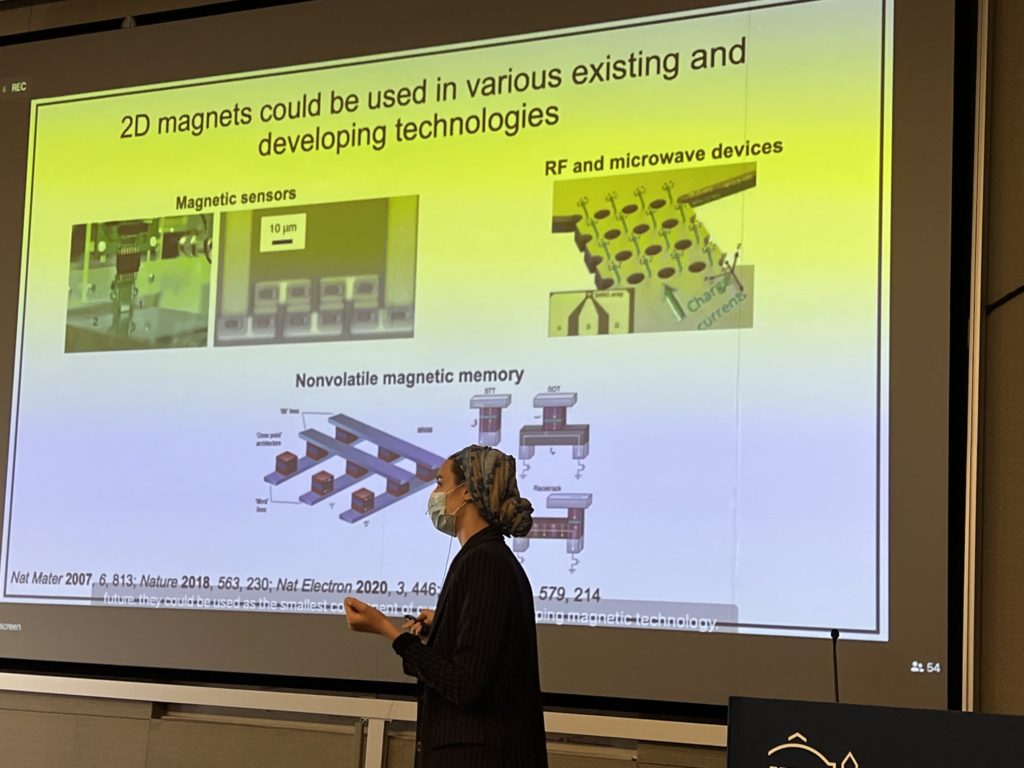
Dahyun Oh, an assistant professor at San José State University, next talked about her group’s work on harnessing microbes to make material coatings for anodes used in Water-in-Salt batteries. The goal was to find a way to use cheap materials like silicon or graphite in the anode and had the ‘crazy’ idea of trying microbes for material fabrication.


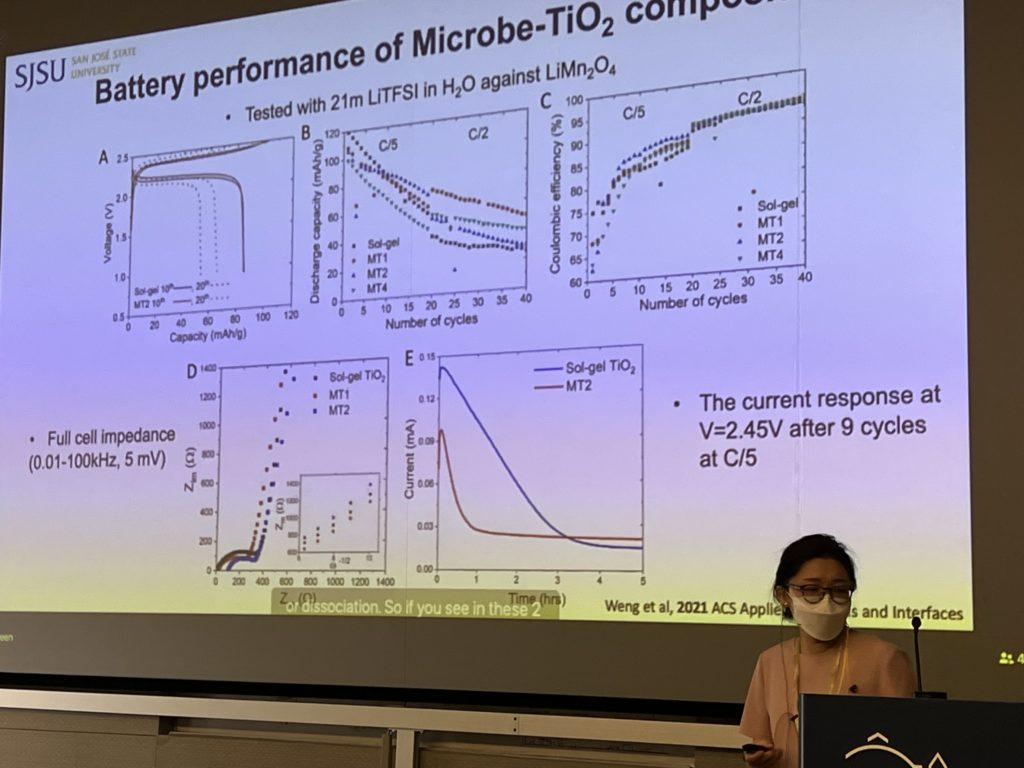
After lunch, Mel Leutkens of @SylvatexInc spoke of about his company’s work on oxygenate diesel fuels. One of their goals is to develop a new fuel blend that can reduce emissions from diesel engines as part of the fight against climate change. We also heard from Fabrizio Riminucci on his work studying exiton-polariton condensation and from Madeline Van Winkle on her work studying moiré superlattices with 4D-STEM.
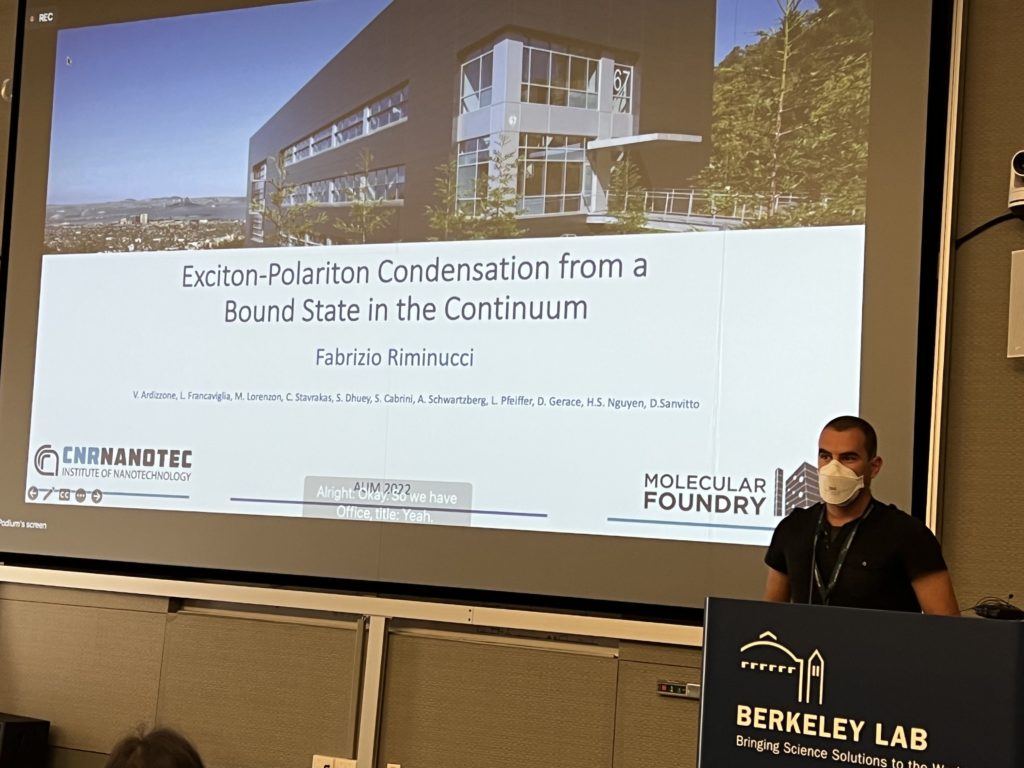
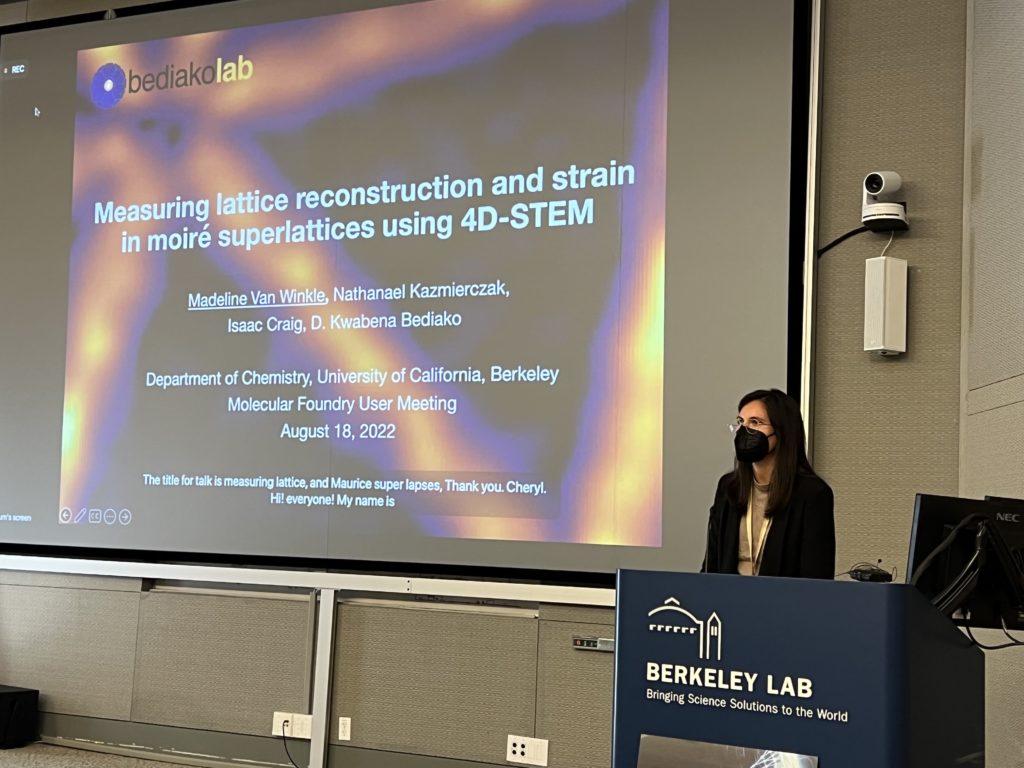
Closing out the day, participants heard from Foundry staff about some new capabilities that are or soon will be available to users. First, new staff scientist Crysten Blaby-Haas talked about the new workflow in genome-encoded materials that she will be setting up in her new role as a joint Foundry/JGI staff scientist. Peter Ercius unveiled that the 4D Camera, installed on the TEAM 0.5 microscope in 2019, is now available to users thanks to the development of the 4D Distillery that can crunch down the huge datasets into manageable useful segments within minutes. Finally, Adam Schwartzberg talked about three new pieces of instrumentation for the Foundry’s cleanroom – a new electron beam writer, a physical property measurement system, and a deposition and analysis ‘cluster tool’.
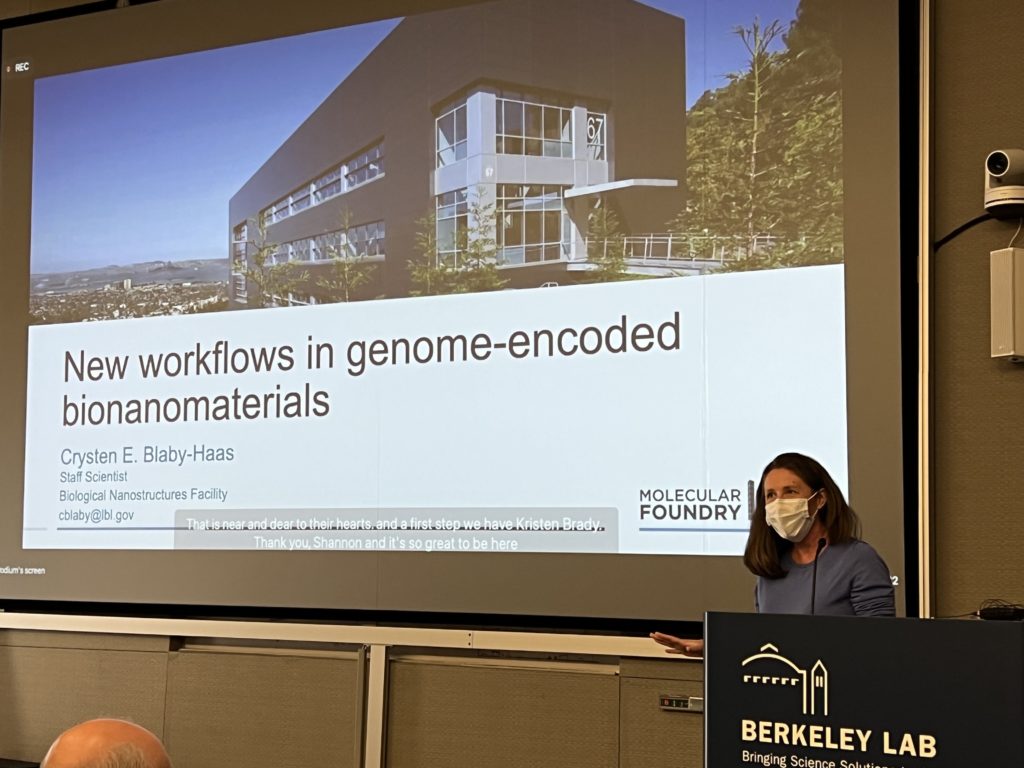


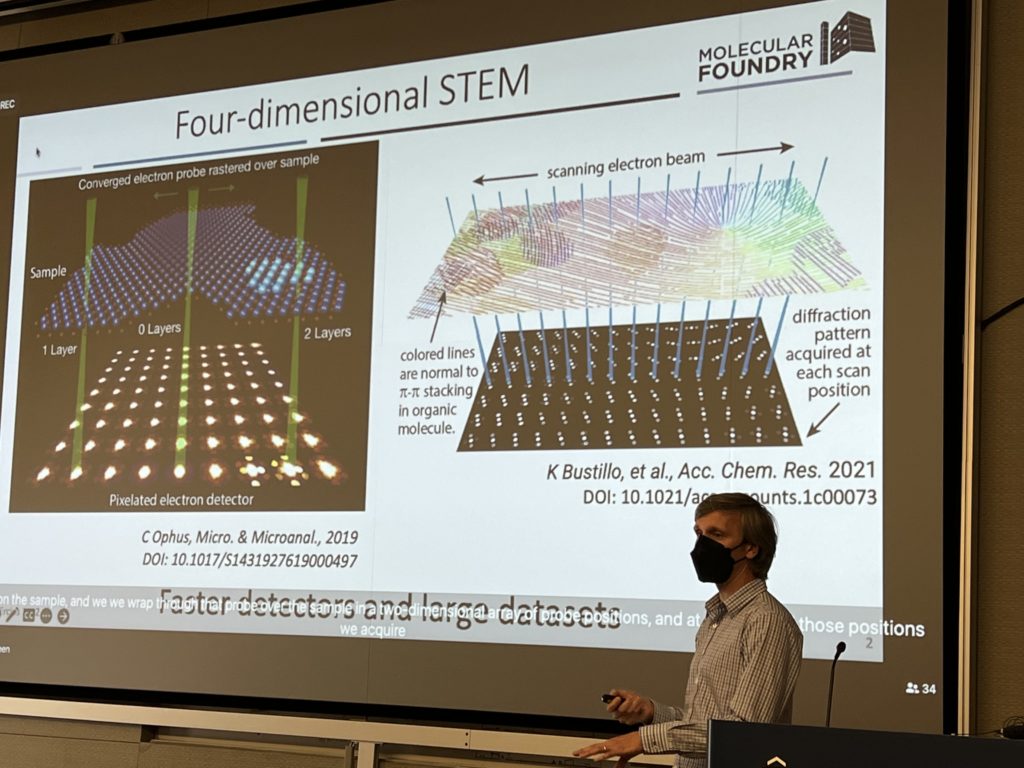
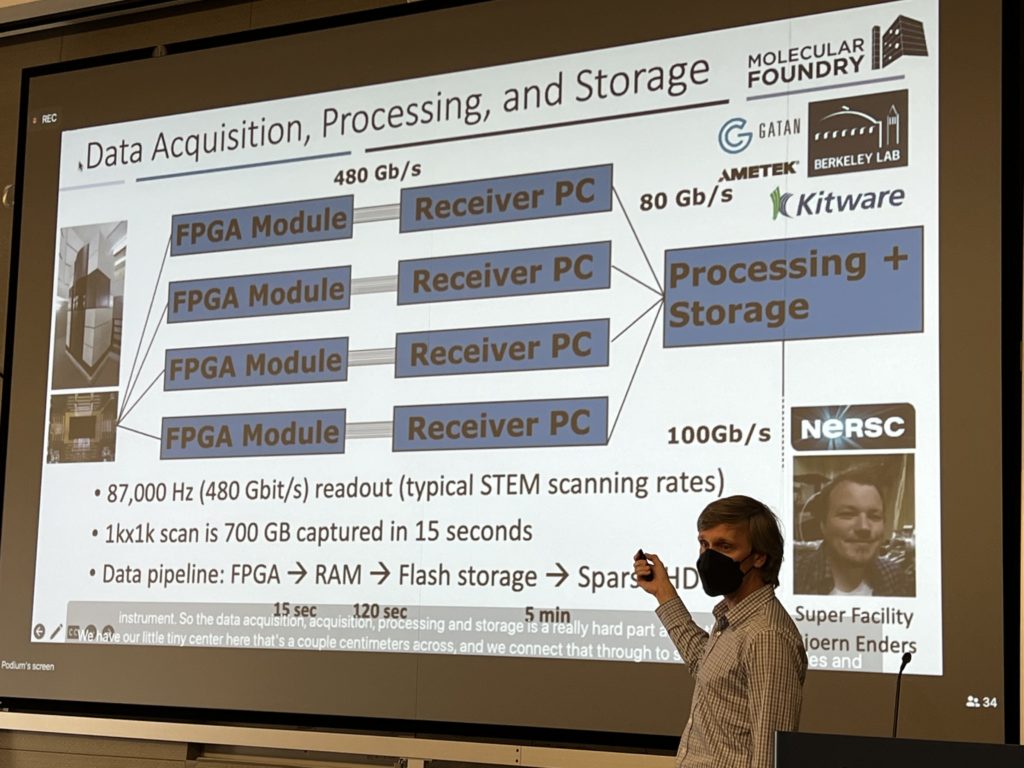
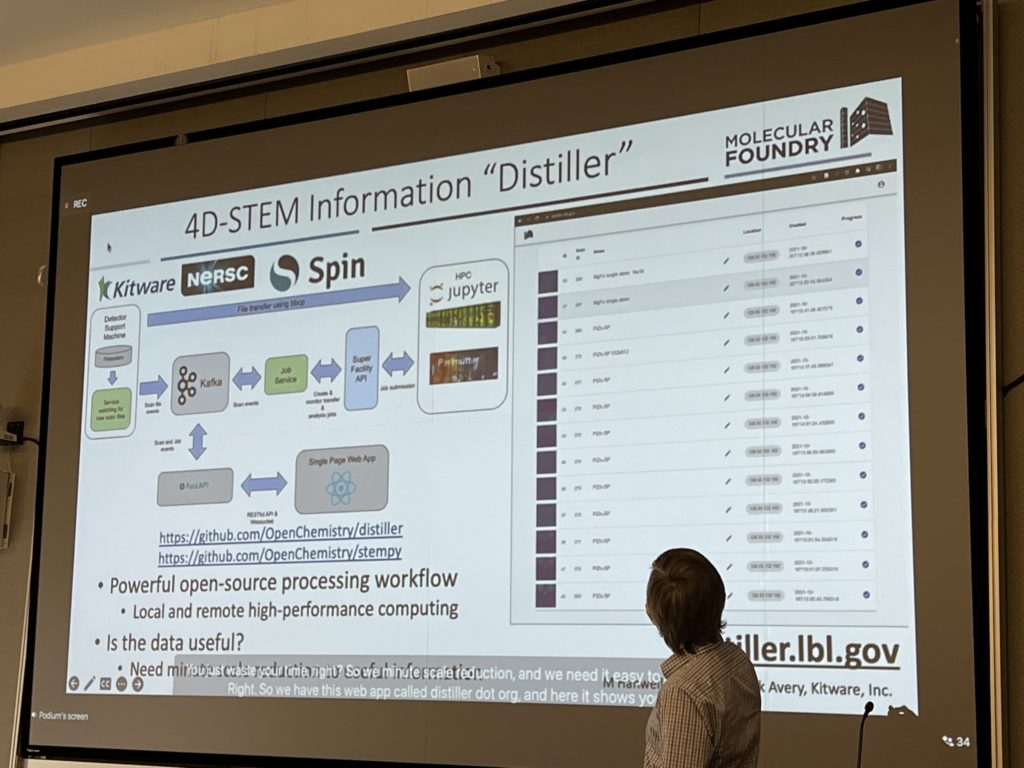

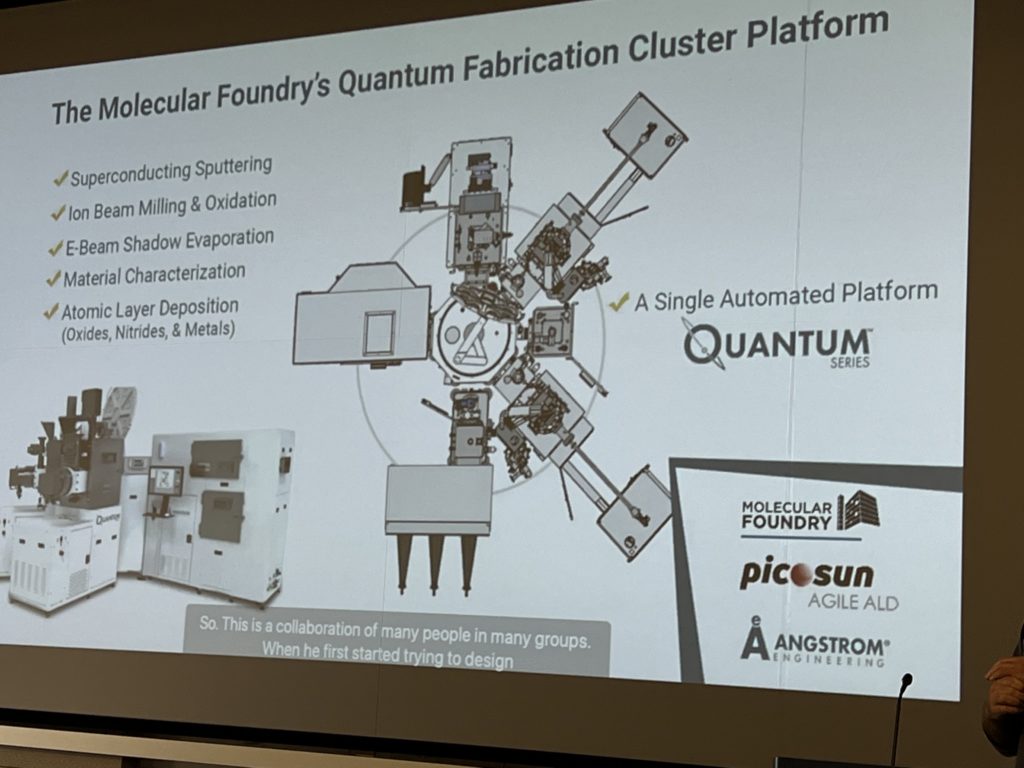
At the end of Day 1, AUM attendees got to hear from 20 young scientists in the meeting poster slam! In one minute, these young researchers pitched their work and invited folks to come visit their poster during the poster session. The poster session itself was a lively event that showcased work from all seven of the Foundry’s facilities, and was a great way to cap off the first day of the user meeting.

